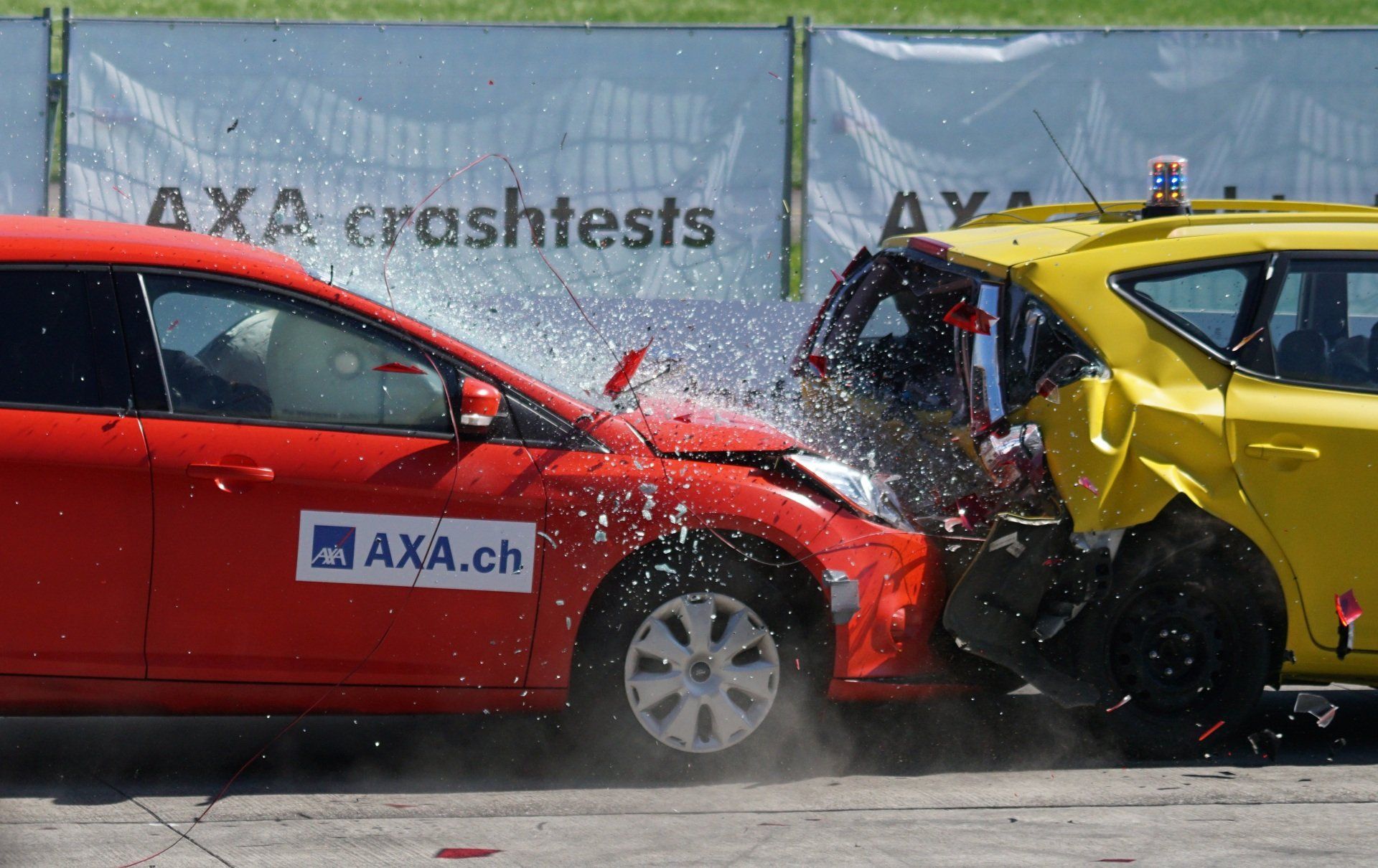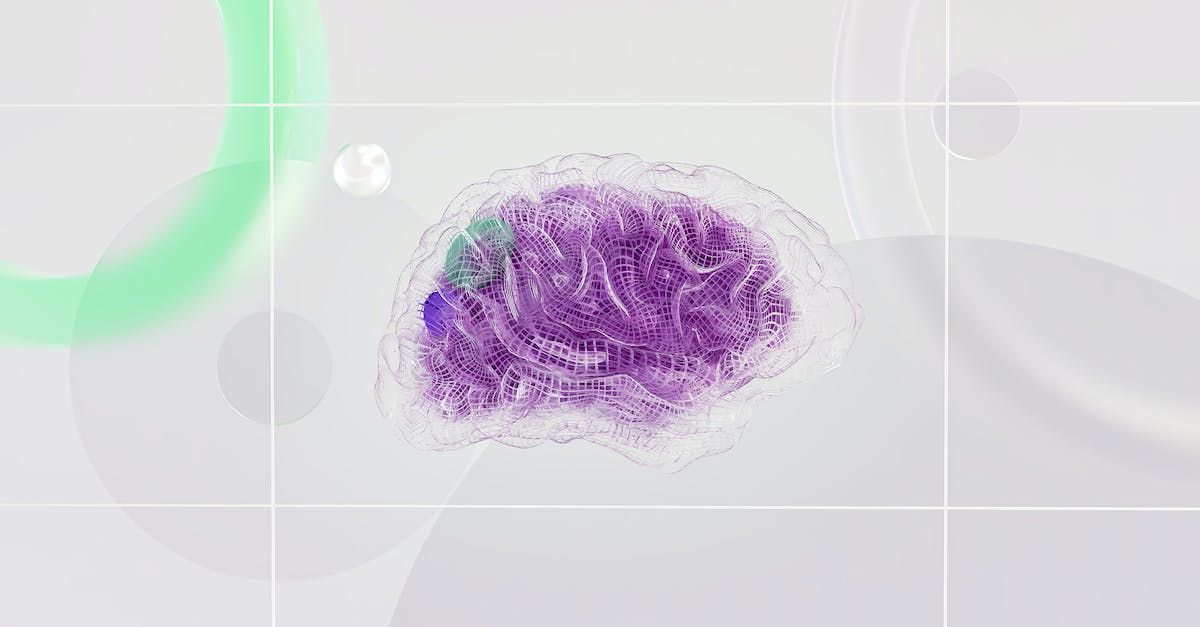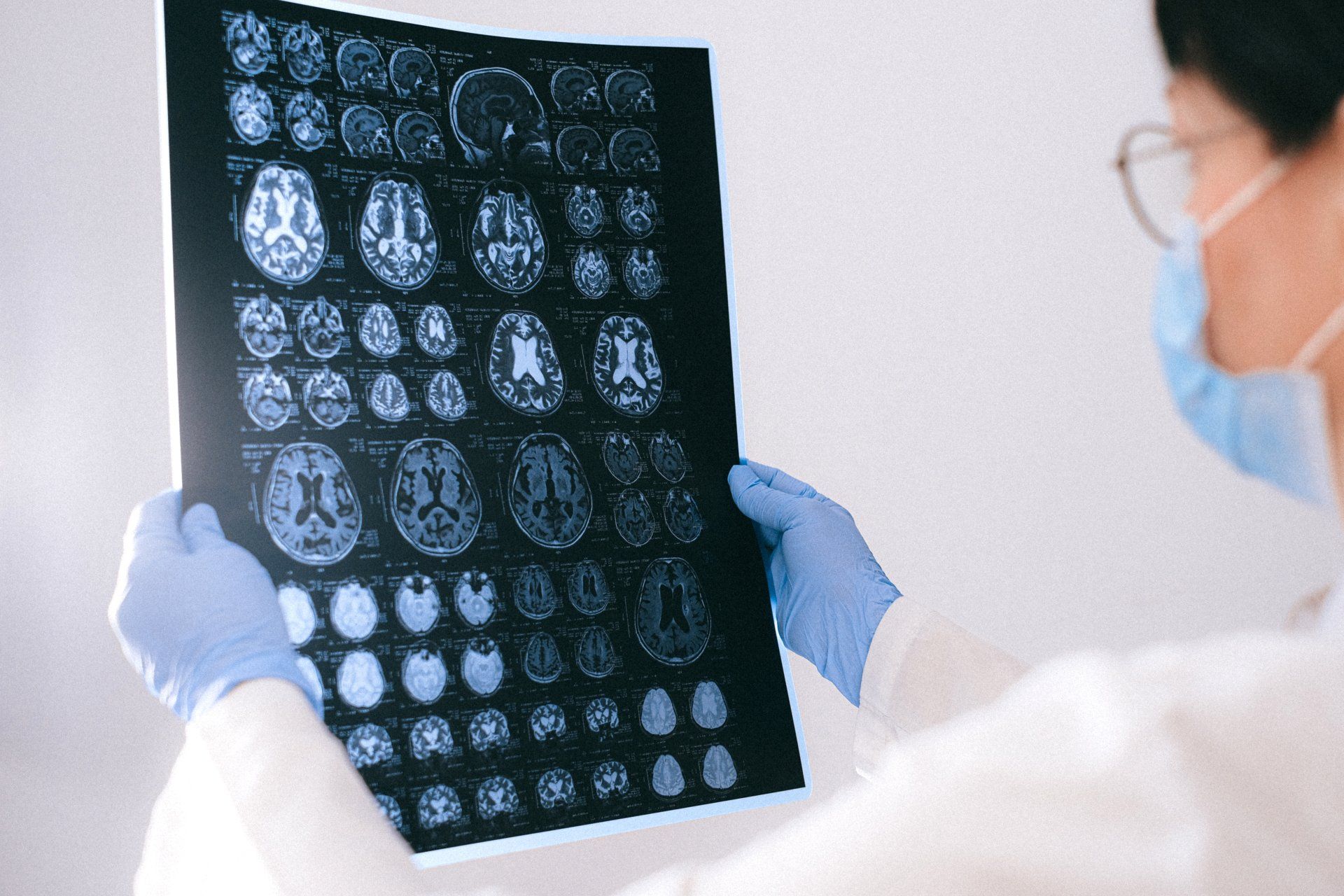Let's talk about your case
You can schedule a call with one of our lawyers anytime. Call today and get the help you need.
Or fill out our online form, and we will respond within 24 hrs.
Uncovering the Science Behind Whiplash and Concussions
BRain injury law firm | wvgb ottawa personal injury lawyers
Did you know that approximately 3 million Americans sustain whiplash injuries annually? Whiplash and concussions are common injuries, often linked to car accidents and contact sports. Understanding the science behind these injuries is crucial for effective treatment and prevention. In this blog post, we’ll dive into the mechanics of “the science behind whiplash and concussions”, explore their connection, discuss treatment options, and provide tips for prevention. Let’s uncover the secrets behind these complex injuries!
Key Takeaways
- Understanding the science of whiplash and concussion injuries is essential for proper diagnosis, treatment, and prevention.
- Rear-end collisions are a common cause of whiplash injuries which can lead to serious symptoms similar to traumatic brain injury.
- Taking proactive steps such as safe driving practices and wearing protective gear can help reduce the risk of these injuries.
The Science of Whiplash: How It Occurs and Its Impact

Whiplash injuries are soft tissue injuries affecting the muscles and tendons in the neck. They occur when the head and neck move abruptly during a car accident, leading to strains and tears in the neck’s soft tissues. This forceful movement can also cause traumatic brain injuries (TBIs). If left untreated, whiplash and head injuries like TBIs can become increasingly severe over time, leading to chronic pain and, in some cases, long-term disability.
Estimates suggest that around 50% of whiplash injury victims endure chronic pain, with 10% becoming long-term disabled. These disturbing figures highlight how vital it is to comprehend the science of whiplash injuries and their impact on car accident victims.
Rear-End Collisions
Rear-end collisions are the most common cause of whiplash injuries. When a vehicle is hit from behind, the force propels the body forward while the head remains momentarily stationary due to inertia. This causes the neck to hyperextend and then rapidly flex, resulting in strain and injury to the soft tissues of the neck. The energy and momentum of the collision play a significant role in the intensity of the whiplash injury.
Research involving rear-end crash tests and football helmet impacts has shown that brain strains experienced in certain rear-end collisions are similar to those generated by sports-related concussions. This indicates that whiplash-induced concussions can occur in specific motor vehicle rear-end collisions, further highlighting the importance of understanding the mechanics behind these injuries.
Whiplash Injury Mechanics
The mechanics behind whiplash injuries involve the abrupt and powerful retraction and extension of the head and neck, resulting in strains in neck muscles and tendons. These injuries can have a profound impact on various brain areas, such as the cerebral cortex, axons, and structures in the neck and spine.
In rear-end collisions, it has been observed that brain strains increase linearly with the angular velocity change of the head. Comprehending these biomechanics plays a significant role in diagnosing and treating whiplash injuries accurately, and in devising efficient preventative strategies.
Symptoms and Complications
Whiplash injuries commonly present with neck pain, which can be accompanied by shoulder stingers and loss of motion in the arms. However, whiplash symptoms can also be similar to those of a traumatic brain injury, even if the brain itself is not impacted.
Accident victims should urgently seek medical attention at the first sign of any discomfort and consider visiting a doctor as a preventative measure. A doctor’s diagnosis will provide the foundation for an insurance claim and evaluate lost wages and pain and suffering damages in the context of personal injury law.
Early intervention can help ensure a smoother recovery and prevent complications such as chronic pain or long-term disability.
The Science of Concussions: Causes and Effects

A concussion is a mild traumatic brain injury (TBI) that can result from a head injury or from a whiplash-type injury causing rapid movement of the head and brain. Often referred to as a mild brain injury, concussions are caused by impacts to the head, whiplash-type injuries, and sudden and violent shaking or jostling of the head and neck during a car accident. They can lead to bruising, swelling, or bleeding of the brain.
The risk factors associated with concussions include age, gender, and participation in contact sports. Identifying the causes and effects of concussions is fundamental to their accurate diagnosis, treatment, and prevention.
Brain Trauma Mechanisms
Brain trauma leading to concussions can result from:
- Forces of acceleration and deceleration on the brain
- Closed brain injuries caused by rapid movement and shaking of the brain within the skull
- Direct contact to the head
During traumatic events, the cerebrospinal fluid (CSF) serves as a shock absorber, cushioning the brain against the skull and reducing the effective weight of the brain, providing additional protection.
Rotational forces also contribute to concussions, as rapid head rotations can generate shear forces throughout the brain, resulting in shear-induced tissue damage and ultimately a concussion. Grasping these biomechanics is vital to the effective treatment and prevention of concussions.
Risk Factors
There are several risk factors for concussions, including:
- a history of prior concussion
- attention deficit/hyperactivity disorder (ADHD)
- mood disorders
- extrinsic risk factors (e.g., sports-related activities)
- head trauma or injury to the head
Children under the age of one and 1 to 4-year-olds are most susceptible to concussions, as well as adolescents and young adults aged 15 to 19.
Individuals with a history of multiple concussions have a higher risk of getting subsequent concussions compared to those with no history of concussions. Those with a history of repeated concussions may experience longer recovery times, more severe symptoms, and may be at risk for long-term problems.
Symptoms and Long-Term Consequences
The severity of a concussion injury and the individual affected can both influence the symptoms experienced. Symptoms may therefore differ from one person to another. Common symptoms include:
- headache
- dizziness
- confusion
- nausea
- blurred vision
- difficulty concentrating
Prompt medical attention should be sought after sustaining a concussion, as even mild concussions, if untreated, can lead to severe long-term consequences.
The effects of a concussion can worsen over time, and it is possible that a full recovery may not be achieved. Additionally, symptoms such as:
- insomnia
- depression
- irritability
- anxiety
may be experienced. Early diagnosis and treatment are key to minimizing the long-term consequences of concussions.
The Connection Between Whiplash and Concussions

Whiplash injuries can potentially result in concussions in certain circumstances, as they both involve rapid, forceful movements of the head and neck. Moreover, whiplash and concussion injuries can present with similar symptoms, such as:
- headaches
- neck pain
- dizziness
- blurred vision
- difficulty concentrating
This similarity in symptoms can make it challenging to differentiate between the two. It is important to seek medical attention if you experience any of these symptoms after a whiplash injury to rule out a concussion.
Appreciating the link between whiplash and concussions is fundamental to their accurate diagnosis and treatment. Research has shown that head restraint interaction during certain motor vehicle rear-end crashes may generate brain strains similar to those produced by rear football helmet impacts, which have been linked to concussions.
Whiplash-Induced Concussions
In certain cases, whiplash injuries can lead to concussions. When the head is subjected to a violent forward motion, the brain can be displaced within the skull, causing contusions or other forms of trauma to the brain tissue. It is suggested that 45% of mild traumatic brain injuries (mTBI) in the United States are caused by motor vehicle collisions, which can include whiplash-induced concussions.
Whiplash-induced concussions can affect various brain areas, such as the cerebral cortex, axons, and structures in the neck and spine. Certain factors, such as prior concussion, participation in collision sports, and female sex, can make a person more susceptible to a concussion from a whiplash injury.
Overlapping Symptoms
Both whiplash and concussion injuries can present with similar symptoms, such as:
- headache
- dizziness
- neck pain
- blurred vision
- difficulty concentrating
This overlap in physical symptoms can make it difficult to diagnose and treat these injuries accurately.
Healthcare providers need to consider both whiplash and concussion injuries when assessing patients with head and neck trauma. Proper diagnosis can ensure that the appropriate treatment plan is implemented, helping patients recover more effectively and avoid long-term complications.
Differentiating Between Whiplash and Concussions
Whiplash and concussion injuries can be challenging to differentiate due to their overlapping symptoms. Whiplash is an injury to the neck resulting from a rapid jerking motion, whereas a concussion is an injury to the brain resulting from a strike to the head.
Diagnostic imaging techniques such as X-rays, CT scans, and MRI scans can be utilized to assess the structures of the neck and head in order to differentiate between whiplash and concussion. Consultation with a healthcare provider for a proper diagnosis and treatment plan is imperative to guarantee accurate diagnosis and appropriate treatment.
Treatment and Recovery for Whiplash and Concussions

Treatment and recovery for whiplash and concussion injuries can vary depending on the severity of the injury and the individual affected. Securing medical attention immediately after sustaining a whiplash or concussion injury is necessary to maximize the potential for a successful recovery.
Common medical treatments for whiplash and concussions include:
- Rest
- Applying ice or heat to the affected area
- Pain medication
- Muscle relaxants
- Physical therapy
- Chiropractic care
- Soft tissue or spinal manipulation
It is important to follow the prescribed treatment plan and make any necessary lifestyle adjustments to support recovery and prevent further injury.
Medical Treatment
Securing medical attention immediately following a whiplash or concussion injury is vital for accurate diagnosis and treatment. Delaying treatment can lead to worsening symptoms and long-term complications, even for seemingly mild injuries.
Various treatment options are available for whiplash and concussions, including pain medication, muscle relaxants, and physical therapy. It is important to work closely with healthcare providers to develop a tailored treatment plan that addresses the specific needs of each individual.
Chiropractic Care
Chiropractic care can play a significant role in treating and managing whiplash and concussion symptoms. Chiropractors can provide a comprehensive treatment plan to address:
- Pain
- Headaches
- Range of motion in the neck
- Dizziness associated with these injuries
Techniques such as spinal manipulation, flexion-distraction, and instrument-assisted soft tissue therapy can be employed by chiropractors to treat whiplash injuries. While the success rate of chiropractic treatment for whiplash and concussions is not well-documented, it can be a valuable part of the overall management and recovery process for these injuries.
Lifestyle Adjustments
Lifestyle adjustments play a key role in aiding recovery and warding off further damage from whiplash and concussion injuries. For whiplash recovery, it is advised to continue with normal daily activities rather than significantly reducing them. In addition, appropriate exercises can be done to stretch, strengthen and stabilize the neck, helping to restore its function.
Dietary modifications, such as consuming antioxidant-rich foods like blueberries and walnuts, can aid in concussion recovery. Additionally, optimizing sleep by establishing a consistent sleep schedule and creating a sleep-friendly environment can play a crucial role in the recovery process for both whiplash and concussion injuries.
Preventing Whiplash and Concussions

Preventing whiplash and concussions starts with understanding their causes and risk factors. By taking steps to minimize the likelihood of car accidents and practicing sports safety, individuals can reduce their risk of sustaining these injuries.
In the following sections, we will discuss specific strategies for car accident prevention and sports safety, providing tips and recommendations to help reduce the risk of whiplash and concussion injuries.
Car Accident Prevention
Practicing safe driving habits is key to avoiding car accidents and reducing the risk of whiplash and concussion injuries. Measures to prevent car accidents include:
- Avoiding distractions while driving
- Abstaining from the use of drugs or alcohol while operating a vehicle
- Adhering to speed limits
- Driving defensively
- Being cognizant of weather and road conditions
Reducing speed and maintaining a safe following distance can also decrease the likelihood of rear-end collisions, which are the most common cause of whiplash injuries. Adhering to safe driving habits can considerably lessen individuals’ chances of enduring whiplash and concussion injuries.
Sports Safety

In sports and recreational activities, prevention strategies can help reduce the risk of concussions. Some prevention strategies include:
- Acquiring and applying techniques to avoid colliding with other athletes
- Always wearing protective gear during sports activities
- Maintaining proper conditioning and strengthening the neck muscles
- Abiding by the rules and regulations of the sport
- Increasing concussion awareness among athletes and coaches
Helmets and headgear can provide protection against skull fractures, severe traumatic brain injury, and death. While no safety equipment can completely eliminate the risk of concussions, using appropriate protective gear and following safety guidelines can significantly reduce the likelihood of head injuries in sports and recreational activities.
Summary
In conclusion, understanding the science behind whiplash and concussions is crucial for proper diagnosis, treatment, and prevention of these injuries. By recognizing their causes, symptoms, and risk factors, individuals can take steps to minimize their likelihood of sustaining these injuries and ensure a smoother recovery process. Remember, early intervention is key - don’t hesitate to seek medical attention if you suspect a whiplash or concussion injury. Stay safe and take care of your health!
Online Resources
For more information on whiplash and concussions, you can visit the following online resources:
- American Association of Neurological Surgeons
- Brain Injury Association of America
- National Institute of Neurological Disorders and Stroke
- Centers for Disease Control and Prevention - Concussion
- Spine Health - Whiplash
Frequently Asked Questions
How does whiplash cause concussion?
During a whiplash-type injury, the sudden force causes the brain to shake quickly back and forth, potentially leading to bruising or tissue damage. This can result in a concussion when the brain collides with the skull due to the violent motion of the head.
Is whiplash associated with concussion?
Whiplash and concussion are both commonly associated with car accidents and can often happen simultaneously, where the jerking movement of the neck causes the head to strike an object or surface. The connection between the two injuries is strong and both should be evaluated if either is suspected.
What is the science behind concussions?
A concussion is a form of traumatic brain injury caused by a bump, blow, or jolt to the head that causes the brain to move rapidly, stretching and damaging the brain cells in the process.
What is the most common cause of whiplash injuries?
Rear-end collisions are the most common cause of whiplash injuries, accounting for up to 70% of cases.
How can I prevent whiplash and concussion injuries while participating in sports?
To prevent whiplash and concussion injuries, wear protective gear, follow safety guidelines, and work to strengthen your neck muscles.
Let's talk about your case
You can schedule a call with one of our lawyers anytime. Call today and get the help you need.
Or fill out our online form, and we will respond within 24 hrs.
Thank you for contacting us.
We will get back to you as soon as possible. You can also book using this link: Personal Injury Booking Page
Please try again later
Related Blog Posts
Practice Areas
QUICK LINKS
CONTACT US
Tel: (613) 505- 5025
Fax: (613) 234-5852
info@wvgblaw.com
200-2571 Carling Avenue
Ottawa, Ontario
K2B 7H7
SERVICES
RECENT BLOG POSTS














